“Give me books, French wine, fruit, fine weather and a little music played out of doors by somebody I do not know.”[CustomTables]
-John Keats
The last article was about the most expensive wines in the world. Now we are narrowing down the circle while rowing to French wines. We would like to introduce the French wine classics from region to region, we selected six wine regions for this, of course without limitation. Our aim is to enlighten our reader’s mind about the French wines on a basic level.
The basic requirement of a good French wine is to be long-lived – that is to say to keep their enjoyment value for decades. Another defining aspect is that do they appear on auctions – i.e. How big is their buy-appeal. Reading the catalogs of big auction houses (Sotheby’s, Chrysty’s) is instructive and entertaining in itself.
We would like to emphasize that when we are talking about a wine, it can only be a wine from a particular winery and vintage, which is made from a certain grape variety or a fixed mixture of several types. These three data clearly define the wine. The following story will help to understand the value and significance of wine-growing “hangouts”.
A highly respected French winemaker was visiting Hungary and someone asked the question: if the French land grows the world’s best grape varieties in top shape, why don’t they deploy Furmint for example? It is likely that this vine wine would be even more enjoyable there, than in it’s original home. The convincing answer was short, probably, moreover, vraisemblable! But the benchmark would be still Hungary, the first growing region.
6. Champagne
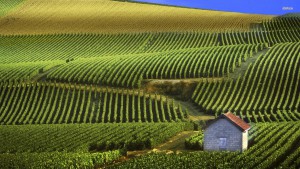
Does the name sounds familiar? According to the legend, the champagne originate from this region, although reportedly other areas in France had already produced sparkling wine before Dom Perignon. Champagne vineyard produce almost two million hectoliters of wine per year nowadays.
The area is divided into several small regions: Mountain of Reims, Marne Valley, the Côte des Blancs and the Côte de Sézanne. Most of the champagne soils are chalky, with less than one meter of a machinable layer. Three grape varieties are grown: the white-fleshed red grapes Pinot Noir and Pinot Meunier and the white grape Chardonnay.
The acidic wine born on the chalky soil is an excellent raw material for the champagne. Blancs de blancs is made of only one variety, the white grape of Chardonnay.
5. Alsace
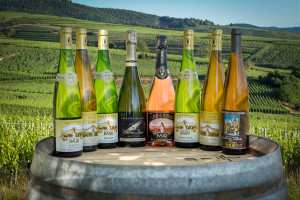
Alsace lies on the slopes of the Vosges and opposite to the Rhine. It is one of the few regions in France, where the name of the grape variety is represented on the bottle.
Alsatian wines are produced from six varieties: the fruity, elegant Gewurztramier; the bodied Tokay Pinot gris; the king of Alsatian wines, the dry and delicious, fiery Riesling; the muscat flavored, aromatic and dry Muscat d’Alsace; the light, dry and mellow-tasted Sylvaner; and the softer, harmonious and dry Pinot blanc.
Local red wines and rosés are made from one single variety: the Pinot noir. The Alsatian wines may also come from a blend of different white grape varieties, then they are called Edelzwicker. A typical flute bottle is used always for bottling. Dry and aromatic sparkling wines are also produced from a few grape varieties – fermented in a bottle- which are called Cremant d’Alsace AOC.
4. Languedoc-Roussillon

The country’s largest wine region gives the 38% of the total territory of the French vineyards. It is mostly famous about it’s table wines and local wines. Languedoc- Roussillon We may also find AOC (verified origin controlled) wines) and AO VDQS (origin controlled, quality) wines.
The former include wines of the highest quality with a guaranteed originality from the historic wine regions subjected to rigorous peer review, while the latter are also high quality products, we must get it right, though they are from a less valuable place of production.
Wines bearing the AOC trademark in Languedoc: Côtes du Roussillon, Côtes du Roussillon-Villages, Collioure, Fitou, Minervois, Faugéres, Saint- Chinian, Blanquette de Limoux, Clairette de Bellegarde, Clairette du Languedoc, Corbières, Coteaux du Languedoc, Costières de Nimes.
3. Bordeaux
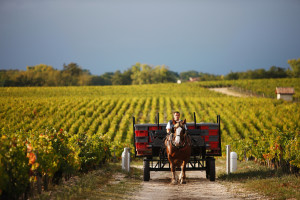 “.. and these days I’ve come to prefer the more steady Bordeaux. I am no longer up to champagne from Ay: it’s like a mistress: sparkling, flighty, vivacious, wayward – and not to be trusted. But Bordeaux is like a friend who in time of trouble and misfortune stands by us always, anywhere, ready to give us help, or just to share our quiet leisure. So raise your glasses – to our friend Bordeaux!”
“.. and these days I’ve come to prefer the more steady Bordeaux. I am no longer up to champagne from Ay: it’s like a mistress: sparkling, flighty, vivacious, wayward – and not to be trusted. But Bordeaux is like a friend who in time of trouble and misfortune stands by us always, anywhere, ready to give us help, or just to share our quiet leisure. So raise your glasses – to our friend Bordeaux!”
–Alexander Pushkin
The Bordeaux wines were already exported to England around 1152. Today, with 100 000 hectares of vineyards– of which 95 000 hectares is AOC area- and an average annual production of 500 million bottles of wine, it is the world’s largest quality wine region.
“ Bordeaux region consists of many little wine regions ”
It’s extension is 105 km north to south and 130 km east to west. The Bordeaux region consists of many little wine regions– this is the reason for it’s diversity of local wines. Excellent red wines can be found in the areas of Medoc, Graves, Libournais, Cotes de Bordeaux, Bordeaux and Bordeaux Supérius
Fruity, fresh white wines are produced in the montanic countryside between the Garonne and Dordogne rivers, in the Entre-Deux-Mers wine region. The Cotes de Blayne on the right bank of the Gironde, however, id famous for it’s dry white wines since ancient times. The wine makers of Sauternes and Barsac produce the world renowned liqueur wines from the botrytised harvest of Sauvignon and Semillon varieties.
Overall, the main varieties of the Bordeaux wine region are: Cabernet Franc, Cabernet Sauvignon, Merlot and Petit Verdot (these are the reds); Sauvignon, Semillon and Muscadelle (the whites).
2. Loire
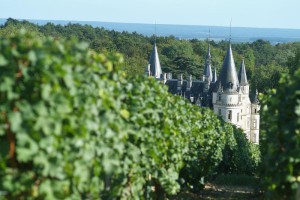
The Loire river irrigates a lot of vineyards stretching from the Massif Central to the Atlantic Ocean. The wine region is the cradle of Muscadet wine grape variety, which is a fresh and crisp white wine. The Muscadet is harvested early and slowly fermented. The wine is made with the traditional technology of the area: it is often filled in the bottle together with the tartar(that is to say it is not racked until bottling).
The main red varieties of the Anjou region are basically the Cabernet Franc and Cabernet sauvignon – while rosé wines are usually made from Grolleau. Certain AOC red wines are made clearly from the two Cabernets, while there are also wines that are fermented from Gamay, Pineau d’Aunis or from Cot grape varieties. The most important white grape variety is Chenin Blanc (Pineau de la Loire), which may be completed with up to 20% of Chardonnay and Sauvignon.
As we roll away from the ocean we arrive to the valleys of the Cher, the Indre and the Vienne rivers, the nine areas of the Touraine region owning the right of nine controlled origin denomination, where Pineau de la Loire (Chenin Blanc), Sauvignon, Gamay, Cot, Pineau d’Aunis and Grolleau varieties grow on loamy, sandy soils.
Following the right side of the Loire river we may meet the Pouilly-sur-Loire vineyards. This region is located on loamy, chalky soils, whose main grape varieties are Sauvignon and Chasselas. The two important AOC wines of the area is Pouilly Fumé and Pouilly-sur-Loire. On the other side of the river take place the famous vineyards of Sancerre.
The vineyards of the Massif Central may be found around the headwaters of teh Loire region. First we meet the Cotes Roannaise and Cotes du Forez vineyards where fresh, full, fruity AO VDQS rosé and red wines are produced from Gamay varity.
1. Bugey
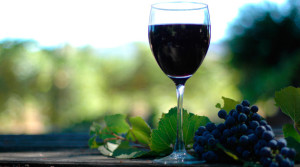
Bugey is a French AOC wine, produced in the valleys of Bugey, in the department of Ain. This is one of the three names of the vineyard of Bugey, with roussette du Bugey and seyssel.
The name bugey has within three geographical designations (cerdon, manicle and montagnieu) and different products, depending on the type of wine (white, sparkling, sparkling, rosé and red) or the grape variety used (Gamay, Mondeuse and Pinot Noir). In the Middle Ages, the monks developed the culture of the vine in the territories of their abbeys. The Bugey vineyard then occupied a considerable area, which he held until the late nineteenth century.
“ Monks developed the culture of the vine ”
Brillat-Savarin, a native of Belley, gastronome and author of the Physiology of taste, owned a vineyard in the Bugey in the early nineteenth century. Dr. Jules Guyot, in 1868, investigated for the government and noted that the vineyards represents 25% of the agricultural product of the department. It is in this context that the phylloxera destroyed all the vines.
The vineyard was replanted very slowly in the twentieth century, over many rocky screes, glacial moraines and sunny sandstone plates. The Bugey vineyard is well established on the most favorable sites, constituting a vineyard of blocks. The wines of Bugey are recognized by the INAO as premium wine (VDQS) by the decree of 11 July 1958 and as a protected designation of origin (AOC) by the Decree of 20 October 2009.
https://www.youtube.com/watch?v=AYJuT_WsdQk
That’s all now about French wines. I hope you enjoyed our journey to the wonderful land of poetry (and of course wine). You can gain more insight to the world of the finest wines by reading our articles about the best Spanish, Portuguese and Italian wine regions.
